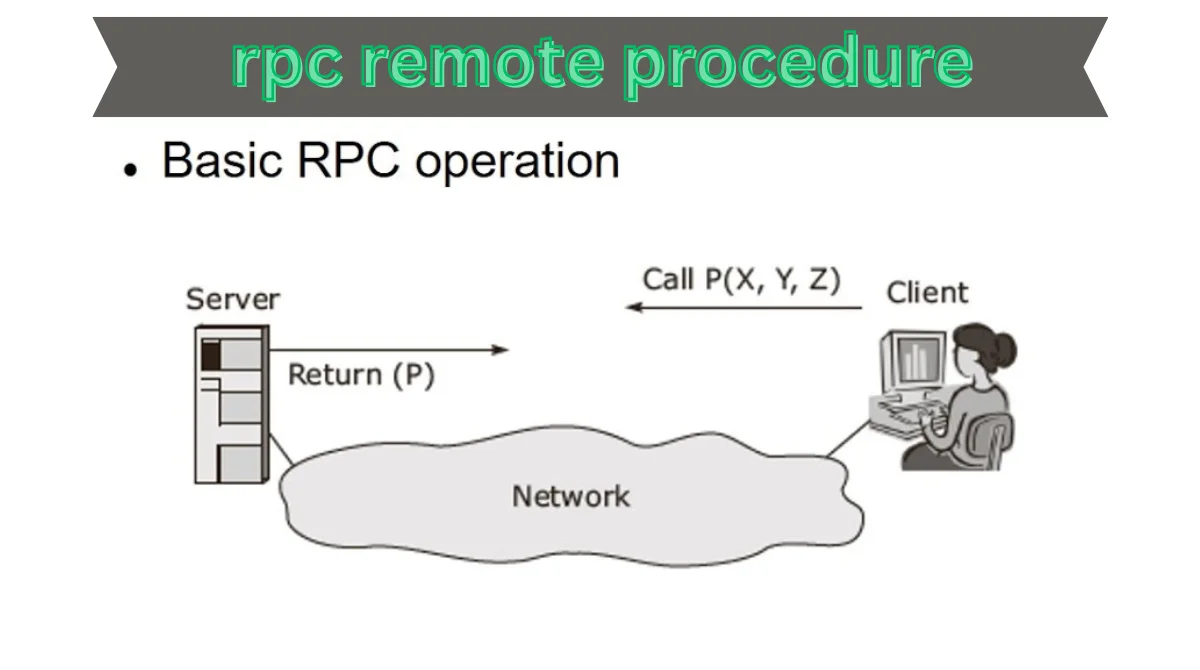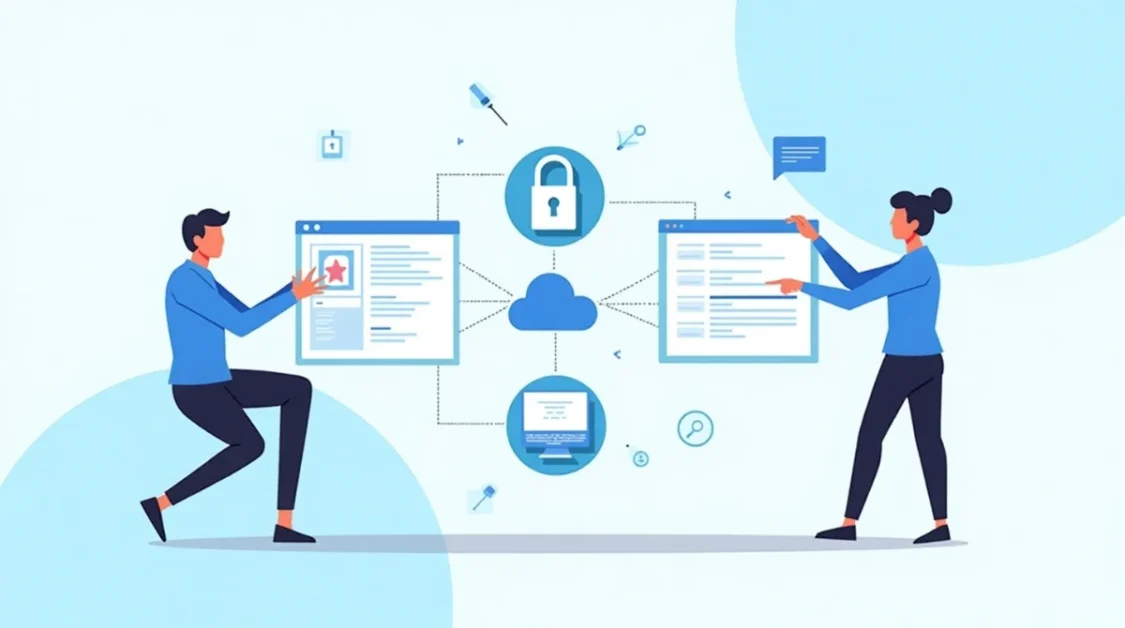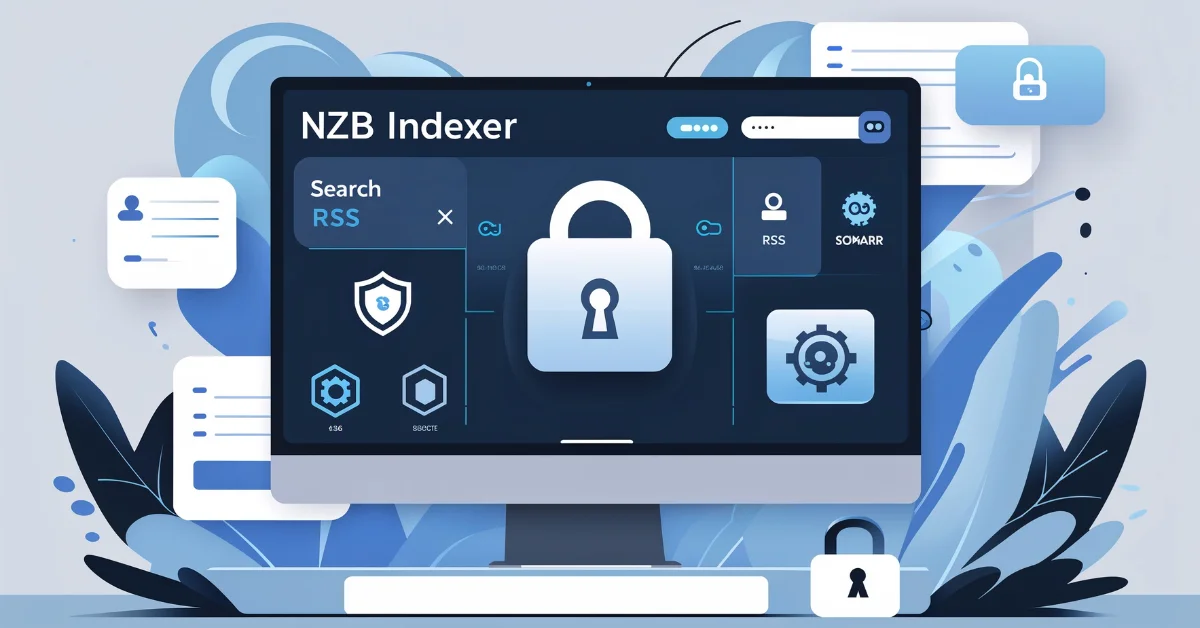What is RPC (Remote Procedure Call)?
RPC, or Remote Procedure Call, is a method used in software development that lets programs communicate with each other, even if they’re on different computers. Think of it like calling someone in another room to bring you a glass of water you make a request, they handle the task, and bring back the result. Similarly, in RPC, one program requests another to perform a function, like fetching data or completing a task, and then waits for the response. It’s a simple way to make different systems work together without needing to know how the other one operates.
How RPC Works?
RPC is a method that allows one program to execute a function or procedure in another program that’s located somewhere else maybe on a different machine in the same network or even across the internet. The key point here is that the calling program doesn’t need to know the details of how the other program works or where exactly it is. It just makes a request, and the remote program takes care of the rest.
Here’s a basic breakdown of what happens when an RPC is made:
- The client (caller) sends a request to a remote server.
- The server, acting as the receiver, handles the incoming request by executing the necessary procedure and subsequently returns a response.
- The client receives the result as if it had run the procedure locally.
This communication usually happens through messages sent over a network. The amazing part is that the person or system making the call doesn’t see much difference between calling a local function and calling a remote one.
Why Use RPC?
There are many reasons why developers and companies use RPC:
- Simplicity: Developers can write code that calls functions on remote systems as if they were local. It hides the complex parts of networking.
- Efficiency: Instead of transferring entire applications or systems, only specific commands are sent across the network.
- Modularity: It allows software to be broken down into smaller pieces (called services), which can be reused or updated easily.
- Distributed systems: It’s very helpful when building systems that run across multiple computers or servers.
Components of RPC
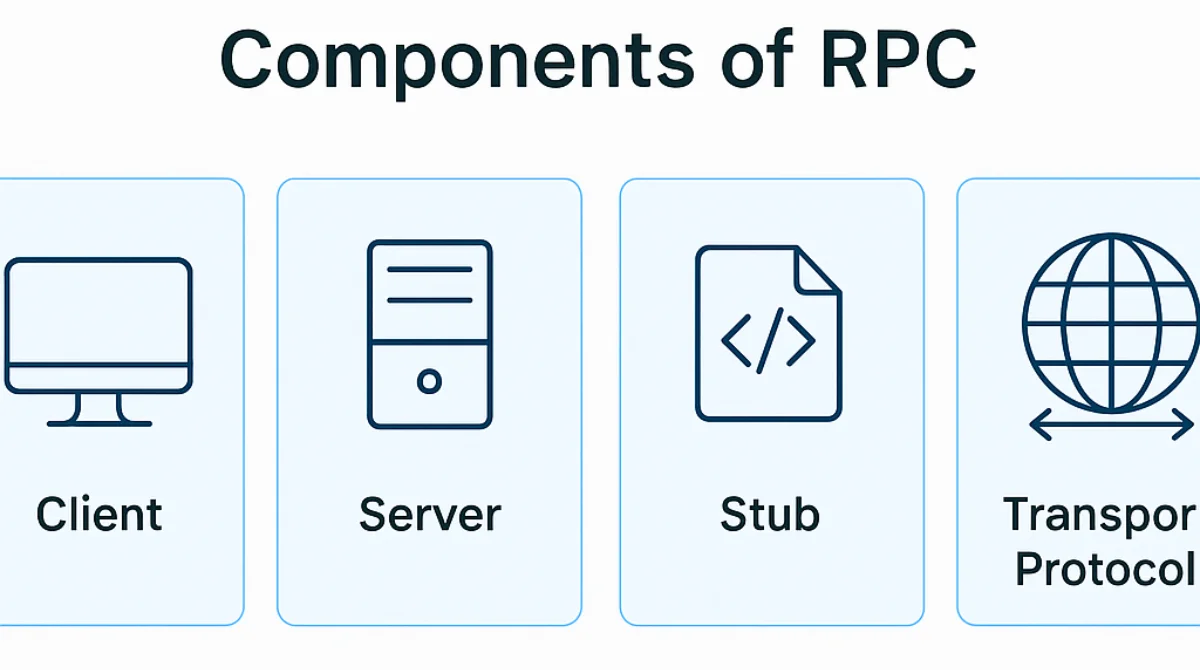
To understand how RPC works, it helps to know its main parts:
- Client: This is the part of the program that starts the request.
- Server: This is the part that performs the work and sends back the result.
- Stub: This is a small helper piece of code that helps the client and server talk to each other without worrying about how data is transferred.
- Transport Protocol: This is the method used to send and receive messages (like TCP/IP over the internet).
The stub plays a key role. On the client side, it takes the function call and turns it into a message. On the server side, another stub receives the message and turns it back into a function call. Once the server finishes the job, the process is reversed to send the result back to the client.
Types of RPC
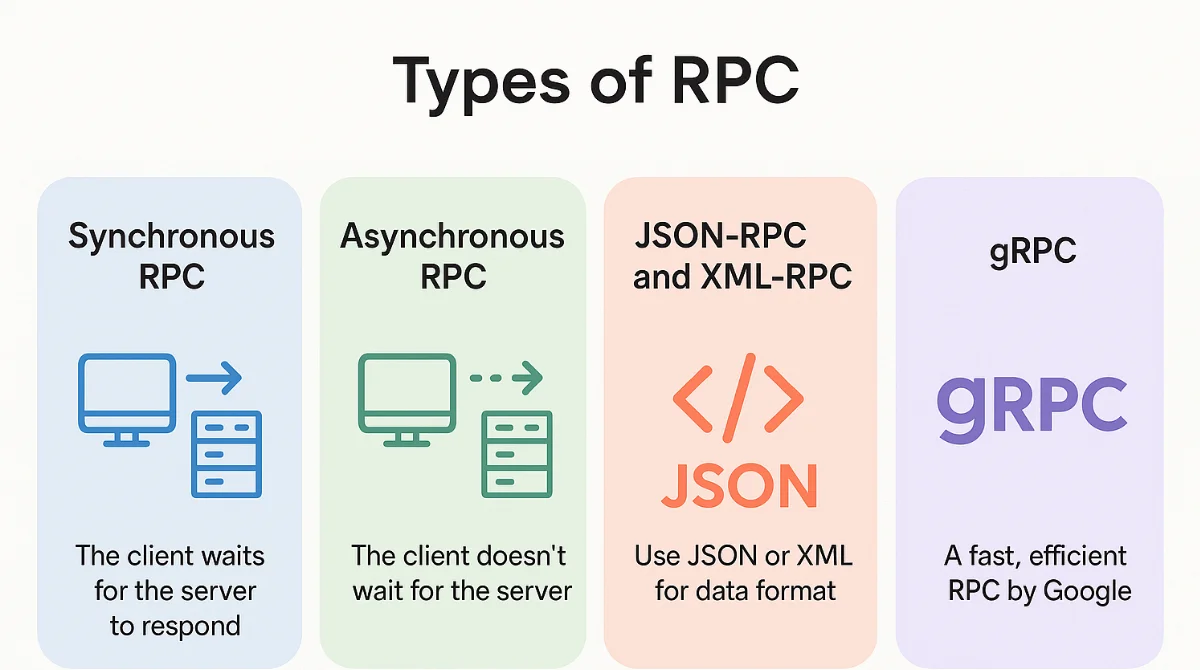
Over time, different types of RPC have been created, depending on what kind of system or need is involved. Here are some common types:
- Synchronous RPC: The client waits for the server to respond before doing anything else. This is simple but can be slow if the server takes time.
- In asynchronous: remote procedure calls (RPC), the client initiates a request and proceeds with its tasks without pausing to wait for the server’s response.
- JSON-RPC and XML-RPC: These are modern versions of RPC that use web-friendly data formats (JSON or XML) to send requests and responses.
- gRPC: A very fast and efficient modern version of RPC developed by Google. It leverages HTTP/2 and Protocol Buffers to achieve high efficiency and optimal performance RPC vs REST APIs
If you have experience in web development, chances are you’re familiar with REST APIs.They also let one program talk to another. So how is RPC different?
- RPC is more like calling a function. REST is more about managing resources (like a database record or a webpage).
- RPC usually uses fewer network resources and is faster, but it can be harder to scale.
- REST is more flexible and easier to understand for web developers, but it may involve more overhead.
In general, RPC is a good choice when you need speed and efficiency, while REST is great for web-based services that need to be open and easy to integrate.
Benefits of RPC
Let’s look at some of the main benefits of using RPC in software projects:
- Easy to use: Developers can call remote functions just like they call local ones.
- Code reusability: Services can be written once and used by many clients.
- Reduces network complexity: The low-level details of networking are handled behind the scenes.
- Enhances performance: By transmitting compact messages rather than large files or entire systems.
- Cross-platform: RPC can work between different types of systems for example, a mobile app on Android talking to a Windows server.
Challenges of RPC
Despite its advantages, RPC also comes with some challenges:
- Error handling: If the server crashes or the network goes down, it can be tricky to manage.
- Security: Opening systems to remote calls can also open them to attacks if not handled carefully.
- Versioning: If the server changes, the client might stop working unless it’s updated too.
- Complexity in debugging: Since parts of the code are running in different places, finding and fixing bugs can be harder.
Use Cases of RPC
You’ll find RPC used in many real-world applications and systems, including:
- Microservices: Modern apps are often made of many small services that need to talk to each other. RPC helps them do that smoothly.
- Database systems: Some databases allow remote commands through RPC to manage or fetch data.
- Cloud services: Platforms like AWS or Google Cloud often use RPC internally to link their services.
- Mobile apps: Apps on your phone often use RPC to fetch data from servers, like when you open a weather app or a messaging app.
- Distributed computing: In large systems where different tasks run on different machines, RPC is a vital tool to manage communication.
Real-World Example
Let’s take a simple example to see how RPC works in real life. Imagine a food delivery app. When you place a food order, the application transmits your order information to the restaurant’s server. That server checks if the items are available and confirms the order. This interaction often uses RPC behind the scenes. The app (client) calls a function on the server (like checkOrderStatus()), and the server sends back the result all while you just -wait for confirmation.
Security in RPC
As systems become increasingly interconnected, ensuring robust security becomes even more critical. RPC needs to make sure that only the right people or systems can make calls and access data. Common methods to secure RPC include:
- Authentication: Verifying that the client’s identity is genuine.
- Encryption: Protecting the messages so others can’t read them.
- Access control: Making sure only allowed functions can be called.
Most modern RPC systems like gRPC come with built-in support for these security features, making them safer to use across the internet.
RPC vs REST
RPC (Remote Procedure Call) is like calling a function on another system, offering speed and efficiency, especially in internal services. REST uses HTTP methods to work with resources like data records, making it more flexible and ideal for web APIs. RPC is great for fast, direct communication, while REST is better for scalable and easy-to-use services across the internet.
Conclusion
Remote Procedure Call (RPC) is a robust technique that enables programs to interact with and execute functions on remote systems as though they were operating locally. It’s widely used in cloud services, mobile apps, and distributed systems. With types like gRPC and JSON-RPC, it offers speed, efficiency, and modularity. While it poses challenges like error handling and security, its benefits make it essential for building scalable, connected, and modern software applications.
